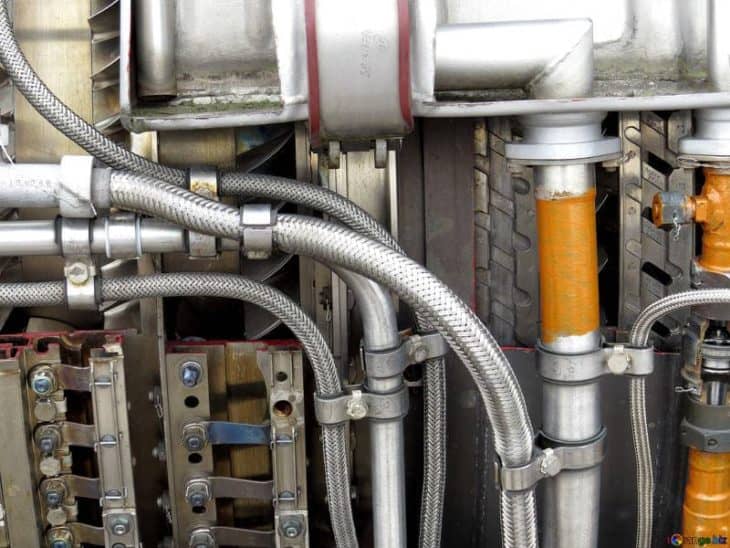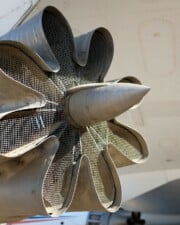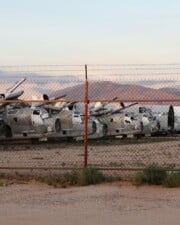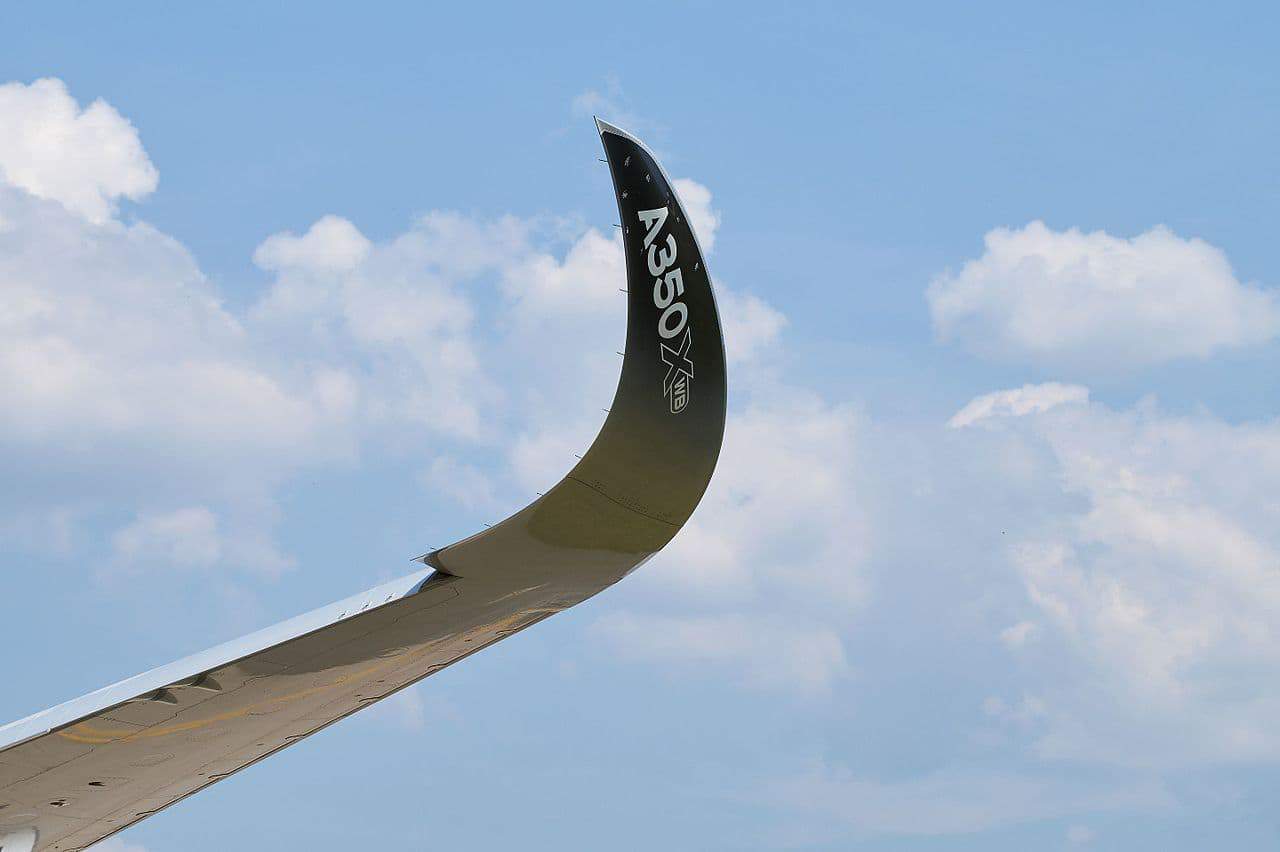If you’ve ever wondered how an airplane is able to take off, land, and operate while in the air, the process can be summed up in one word: hydraulics. Airplanes can utilize either hydraulic or pneumatic systems to operate, but once you find out the many advantages of using hydraulics, you’ll likely wonder why they ever operated using any other system.
How Do Airplanes Use Hydraulics?
Hydraulics are used in planes of all sizes to operate most of their equipment, such as landing gear, brakes, flaps, thrust reversers and flight controls. The reason airplane hydraulic systems are used is because they provide the perfect amount of force or pressure without requiring too much fluid, making them a big convenience for aircraft of all types. Hydraulic systems are also very reliable and offer many advantages over a pneumatic system.
The Basics of Aircraft Hydraulics
To learn more about hydraulics, it is good to know some basics regarding this and pneumatic systems so that you can recognize their differences. The medium used to transmit the power needed to operate an airplane is the main difference between these two systems. In hydraulics, a liquid or oil is used, while pneumatic systems use compressed gas or air to transmit power.
By contrast, some of the disadvantages of a pneumatic system include their sensitivity to vibrations, which can wreak havoc on a plane; their noise levels, which are quite high; and their lack of precision controls, which makes them a less efficient system.

Hydraulic systems also work better because the liquids used are normally not compressible, meaning there is no delay in the movement. Pneumatic systems include some delay in movement since the gases can be compressed. In hydraulic systems, therefore, there is no need for a compressor, but instead they contain parts such as pistons, pumps, and cylinders, among others.
Hydraulics also offer more force since hydraulic oil is not compressible, whereas air or gas can cause the device to shake and move around too much when the air pressure fluctuates. Hydraulic systems are also more economical to utilize than pneumatic systems, and it is also a safer way to operate aircraft and other vehicles. Therefore, if a lot of pressure is what you’re expecting, then you want to use hydraulics and not pneumatic systems.

The fluid used in airplane hydraulic systems has to act as a coolant, lubricate the various parts of the systems, and accurately transmit the pressure – all at the same time. There are three main types of hydraulic oil used in planes today, and they include the following:
- Vegetable oil, which is colored blue and is generally made out of alcohol and castor oil. Corrosion and sludge sometimes result from this type of oil, which is why it is typically found mostly in older aircraft only.
- Synthetic oil, which consists mostly of man-made phosphate ester and is colored purple. It can also be colored amber or green, and it can sometimes eat away the insulation and, therefore, degrade the wiring in an airplane.
- Mineral oil, which is dyed red and is a type of kerosene petrochemical product. It lubricates very well and inhibits foaming and corrosion, and it is both stable and does well in temperature changes.
Small planes mostly use mineral oil, but of course, the manufacturer of the airplane itself usually recommends which oil will work best for you, and it is smart to heed that advice. Because of its low viscosity, hydraulic oil easily fills all aluminum pipes and lines, which is good because it has to provide those qualities to successfully handle a wide range of temperatures.
Just what are hydraulic systems used for most on an airplane? For smaller planes, they are used to operate retractable landing gear, the brakes, and a few constant-speed propellers. Larger planes use the systems for wing flaps, spoilers, and flight control services, as well as many other items.

The basic components of the hydraulic system in an airplane include:
- A reservoir
- A pump, either electric, hand- or engine-driven
- A filter that is used to keep the oil clean
- A valve that allows you to control the flow of the oil
- An actuator where the majority of the action is found
- A relief valve used to relieve excess pressure
- A heat exchanger that keeps the oil at the proper temperature at all times
The above-mentioned parts are basic parts that are found in most airplane hydraulic systems; however, there are also many subsystems found inside of an airplane that work together to perform different, but very related tasks. The reason many of these subsystems exist is in case the main hydraulic system fails, which makes them very valuable indeed.
Pascal’s Law
It is important to know a little about Pascal’s Law when learning how hydraulic systems work the way they do. In simple terms, Pascal’s Law states that:
If you apply pressure to liquid anywhere in a particular system, this action causes there to be equal pressure distributed evenly throughout the entire system.

In an airplane, the pilot will flip a switch on a particular hydraulic system and activate the pump, which pressurizes the system and sets the actuator in motion. The actuator’s movement is then transferred to the section of the plane requiring action – for example, the brakes or landing gear – which is moved into the correct position. If pressure is released from the system, the reverse action is accomplished.
Ever since the mid-1600s when Pascal first discovered that pressure set up in a fluid acts equally in all directions, it has led to advancements in many areas, including aviation advancements. Pascal’s Law is demonstrated every time you look at how pressure sets up in a fluid and how it relates to the force which acts on that fluid and the way it acts with the surface area.
There are also several formulas that help you remember Pascal’s Law, but those are not really important to know unless you wish to become an aviation mechanic or a pilot. For now, let’s just look at the many advantages of using hydraulic systems over pneumatic systems.

The Many Advantages of Hydraulic Systems in Airplanes
Hydraulics used in airplanes provide many different advantages. For instance, they are very reliable and dependable systems, and they require a small number of moving parts, which means fewer things can go wrong. They also respond very quickly to control inputs, which is important because it directly affects the efficiency and safety of the airplane.
In addition, hydraulic fluid is not susceptible to compression, which means that as the plane takes off and lands, this fluid is not going to change the pressure and, therefore, the plane is more reliable and efficient. Hydraulic systems enable the plane to provide a smoother, safer ride and are especially important in critical flight situations where the pilot has to execute certain functions without being concerned about how long those actions will take or if they will happen at all.
Of course, this doesn’t mean that airplane hydraulic systems are perfect, because they are not. These systems still need preventative maintenance provided by well trained and qualified professionals. However, with regular and consistent maintenance, these systems are very reliable and efficient, which is why so many airplanes now utilize them.
Related Posts














